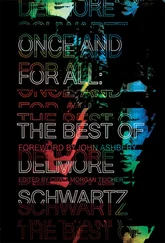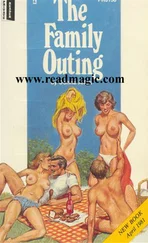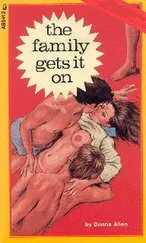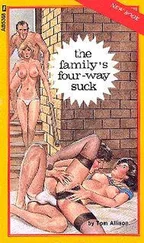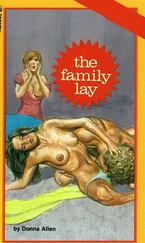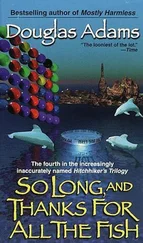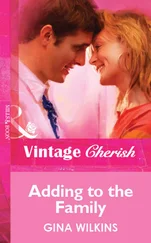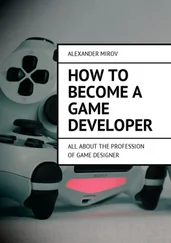And there’s the punctuation laugh: my cue to speak. “Why Tide Glider ?” I ask, looking at the picture.
“Oh, Anne and her family have a boat with that name, and it seemed appropriate as a name for Anne too. She’s sort of glided away from us. Me, Mum and Dad, I mean. Still . . . maybe not forever.” A sad smile instead of a laugh this time.
So Anne had a sticker made with the name of her own boat on it, and stuck it over my house sign. Why the other houses, though, and the other boats? Why involve them? To create extra confusion? So I wouldn’t be able to convince the police that I and my house, specifically, were the targets?
“It’s a beautiful painting,” I say. This could be the biggest lie I’ve ever told. Sarah’s a talented artist, but I find the picture of Anne offensive because of its subject. I might buy it and make one or two additions: a red arrow and the words “EVIL BITCH” in red capitals.
I was hoping to talk to Sarah and Anne’s parents today too—Martin and Denise Offord—as they live nearby, but shortly after I arrived, Sarah mentioned that they’re in the Algarve and spend most winters in their villa there.
I force my eyes to linger on the portrait in front of me. “I read something online about this painting, I think.” I do my best to sound vague. “Anne was referred to as your estranged sister.”
Sarah frowns. “Yes, I know exactly the article you’re talking about. I never used the word estranged and was furious when they did. There’s been no row, and we all get on perfectly well. Anne’s busy with her own life and family, but we see her every Christmas and . . .” She shrugs. “To be fair to her, we’re an in-each-other’s-pockets family. It can be a bit stifling. I can understand why Anne needed to go her own way. I did too. Or I thought I did: fled to Scotland, got married. When we split up, my ex-husband gave my parents as the main reason he couldn’t live with me.” Big, loud laugh for this.
“He didn’t like them?”
“No, it wasn’t that. It was more that he said he felt as if he was married to all three of us. Mum and Dad called every night, we got together every other weekend . . . either they’d come to Scotland or we’d come here. Nathan got sick of only having one weekend in two to ourselves. To me it was just normal!” Small giggle.
“But Anne doesn’t speak to you every night on the phone or visit every other weekend?” I say.
“No.” Sarah sighs. “She comes with Stephen and the kids for two hours on Christmas Day. That’s it. And it’s clear she’s not having a good time when she’s there. She always seems kind of . . . removed from the festivities, as if she’s present in body only. Stephen, her husband—he’s really lovely!—he tries to overcompensate by being superfriendly, but it’s a bit awful really. Ha!”
“Well, it’s clear from this portrait—thanks to your skill as an artist—that Anne is a woman with many interesting facets to her character,” I say.
“Seriously? That’s so sweet of you!”
“What’s she like? I hope you don’t mind my asking. I mean, what was she like as a child? And—again, feel free to tell me to mind my own business—but was she always a bit distant and aloof from the rest of you, or . . . did something happen?”
“Nothing whatsoever. That’s why it was so weird when she suddenly backed away from us soon after she left for university. I know everyone says, ‘I did nothing wrong,’ but, literally, there was nothing that happened. I think Anne must have had some kind of . . . psychological epiphany. Sometimes the people you grew up around remind you of the old you—the person you don’t want to be anymore. Mum and Dad begged to know what they’d done wrong, but all they got in response was polite deflection. I told them: leave her be. If she’s ever going to come back to us, it’ll only happen if we back off.”
“Sounds sensible,” I say.
“I’m more optimistic than Mum and Dad,” says Sarah. “Anne and I were close, despite the seven-year age gap between us. I was her adoring disciple. She used to tell me stories about film stars she’d met—Richard Gere and Harrison Ford—and pop groups that had asked her to join because they were in dire need of a female vocalist—Duran Duran, no less! I’d lap up the stories unquestioningly.” Titter, titter.
“But . . . they weren’t true?” I don’t know why I’m asking when I know the answer. Teenage Anne Offord from Totnes did not meet Richard Gere or Harrison Ford. She wasn’t invited to sing with Duran Duran.
“Oh God, no, but Anne told them as if they were!”
It’s called lying. Same goes for making up pregnancies.
“Anne had the most incredible imagination,” says Sarah. “I was always the visual one and she was the storyteller. I was sure she’d be a writer. So were Mum and Dad. I actually wonder if she went into academia to spite us.”
“It’s odd that you think she’d want to do that, given that you say nothing happened, no conflict or rift, or . . .” I shrug. Mustn’t seem too interested. Feigning a laugh, I say, “Are you sure there’s no dark family secret? A third sister tucked away somewhere who might have driven Anne away?”
“Ha-ha. No, I’m afraid not.”
Not a flicker of recognition or guilt.
“Literally, apart from being very close—closer than most, if you don’t include Anne—there’s nothing interesting about my family at all.”
Apart from it containing a pathological liar. One who started early.
“I branched out into the semi-bohemian by being an artist, but other than that, my childhood was building-society-advert dull: 2.4 kids and a microwave kind of deal. The most dramatic thing to happen was when I seemed to develop a strange respiratory illness, but then even that turned out to be a massive anticlimax: I was just allergic to our dog!”
The mention of a dog makes me think of Figgy and how odd it is not having him with me. Alex has him today and I’m a bit jealous. I want to get back to him, bury my nose in the curly fur on the top of his head. If I could go back in time and tell the Muswell Hill, TV-producer Me that she would turn into someone who aspired to do Nothing and looked forward to cuddling a dog, she would be distraught.
And, what’s more, it would serve her right—for what, I’m not sure.
“Is this painting of Anne for sale?” I ask Sarah.
“Ooh. Good question.” She puts her thumb in her mouth and starts to chew it. “Can I think about it and let you know? I mean, I’m sure it will be for sale, but because of the sentimental value, I don’t want to rush into selling it, if that makes sense.”
“Of course.” I smile. Inside, I’m cursing. I want the picture now. I want to deface it. Dig a grave for it on Professor Anne’s lawn. Let her good friends Richard Gere and Harrison Ford try to stop me.
I write down my details for Sarah and ask her to email me once she’s decided about the portrait. Hopefully she’ll decide in my favor, and when I come back to collect it, I can ask her more questions. If she rumbles me, I can always tell her the truth: “Look, I’m sorry I came here under false pretenses, but here’s the situation . . .” That’s what normal people do—people who lie only occasionally, when they need to: they apologize and revert to the truth when found out. They have a sense of shame.
Pathological liars like Anne Donbavand produce new lies to explain away the old ones: “Oh, did what I said turn out not to be true? Here, then, have another nice but false story.”
The teenage girl who pretended Duran Duran were headhunting her grew into an adult woman who pretended her family changed its name and started a new life because they were in danger from a nameless pursuer .
Читать дальше

